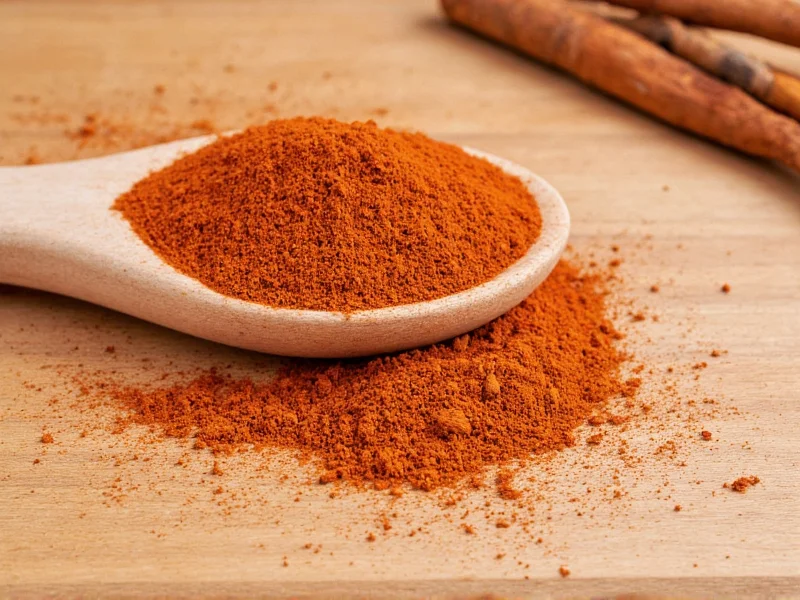Understanding spice substitutions is essential for home cooks and professional chefs alike. Mace, with its delicate floral notes and warm citrus undertones, presents a unique flavor profile that can be challenging to replicate exactly. However, knowing the right alternatives ensures your recipes maintain their intended character even when this specialty spice isn't available.
What Makes Mace Unique
Mace originates from the same tropical evergreen tree that produces nutmeg. The key difference lies in which part of the fruit is used. Mace is the lacy red covering (aril) that surrounds the nutmeg seed. This structural difference creates subtle flavor variations between the two spices. Mace offers a more delicate, slightly sweeter profile with citrus notes, while nutmeg has a stronger, warmer, and more intense flavor.
Why You Might Need a Mace Substitute
Cooks seek mace alternatives for several practical reasons. Mace can be harder to find than nutmeg in many grocery stores, particularly outside specialty markets. Some recipes specifically call for mace's unique flavor profile, but pantry limitations require adaptation. Additionally, certain dietary preferences or regional availability issues might necessitate finding suitable replacements for traditional mace usage.
Nutmeg: The Primary Substitute for Mace
When considering what can I use instead of mace spice, nutmeg stands as the most appropriate replacement. Since they originate from the same plant, their flavor profiles share significant similarities. The main difference is intensity—nutmeg is stronger, so when substituting in delicate recipes, consider using slightly less than the 1:1 ratio.
For best results with nutmeg as a mace alternative, always use freshly grated whole nutmeg rather than pre-ground versions. The essential oils that provide the distinctive flavor degrade quickly in pre-ground forms. A microplane grater works perfectly for this purpose, releasing the maximum aromatic compounds.
| Substitute | Ratio to Replace Mace | Best Used In | Flavor Notes |
|---|---|---|---|
| Nutmeg | 1:1 (slightly less in delicate dishes) | All applications | Stronger, warmer, more intense |
| Allspice | 1:1/2 | Meat dishes, stews | Clove-like, peppery notes |
| Cinnamon | 1:1/2 | Baking, desserts | Sweeter, less complex |
| Pumpkin Pie Spice | 1:3/4 | Baking, fall recipes | Blended spice profile |
Alternative Substitutes for Specific Applications
While nutmeg serves as the universal mace replacement, certain culinary contexts benefit from more specialized alternatives. For savory applications like meat rubs or stews, allspice provides complementary warm notes with its complex blend of clove, cinnamon, and nutmeg characteristics. When substituting allspice for mace in indian cooking, use half the amount due to its stronger profile.
Baking applications often respond well to cinnamon as a mace alternative, particularly in recipes where the citrus notes of mace aren't critical. Cinnamon lacks mace's complexity but provides a familiar warmth that works in many dessert applications. For holiday baking specifically, pumpkin pie spice offers a ready-made alternative that contains nutmeg among other complementary spices.
Practical Substitution Guidelines
Understanding the mace and nutmeg conversion chart is crucial for successful substitution. In most standard recipes, the 1:1 ratio works perfectly. However, delicate dishes like béchamel sauces, custards, or light-colored cakes benefit from using 3/4 teaspoon of nutmeg for every teaspoon of mace called for. This adjustment prevents the stronger nutmeg flavor from overwhelming subtle ingredients.
When substituting mace for pumpkin pie spice in recipes, remember that pumpkin pie spice is already a blend containing nutmeg. In this case, you'll need to adjust other spices in your recipe accordingly. For meat dishes requiring mace, consider adding a pinch of allspice to your nutmeg substitute to enhance the savory profile.
Storage Tips for Maximum Flavor
Proper storage significantly impacts the effectiveness of both mace and its substitutes. Whole nutmeg seeds retain their flavor for up to five years when stored in an airtight container away from light and heat. Ground versions lose potency within six months. Mace blades maintain quality for about two years when stored properly. For best results with any spice substitute, purchase whole spices and grind them as needed.
When Substitution Isn't Ideal
Certain traditional recipes rely specifically on mace's unique flavor profile. Classic Dutch speculaas cookies, certain Indian biryanis, and some French béchamel variations achieve their distinctive character from mace. In these cases, if possible, seek out authentic mace rather than substituting. Specialty spice shops and online retailers typically carry mace blades at reasonable prices.











 浙公网安备
33010002000092号
浙公网安备
33010002000092号 浙B2-20120091-4
浙B2-20120091-4